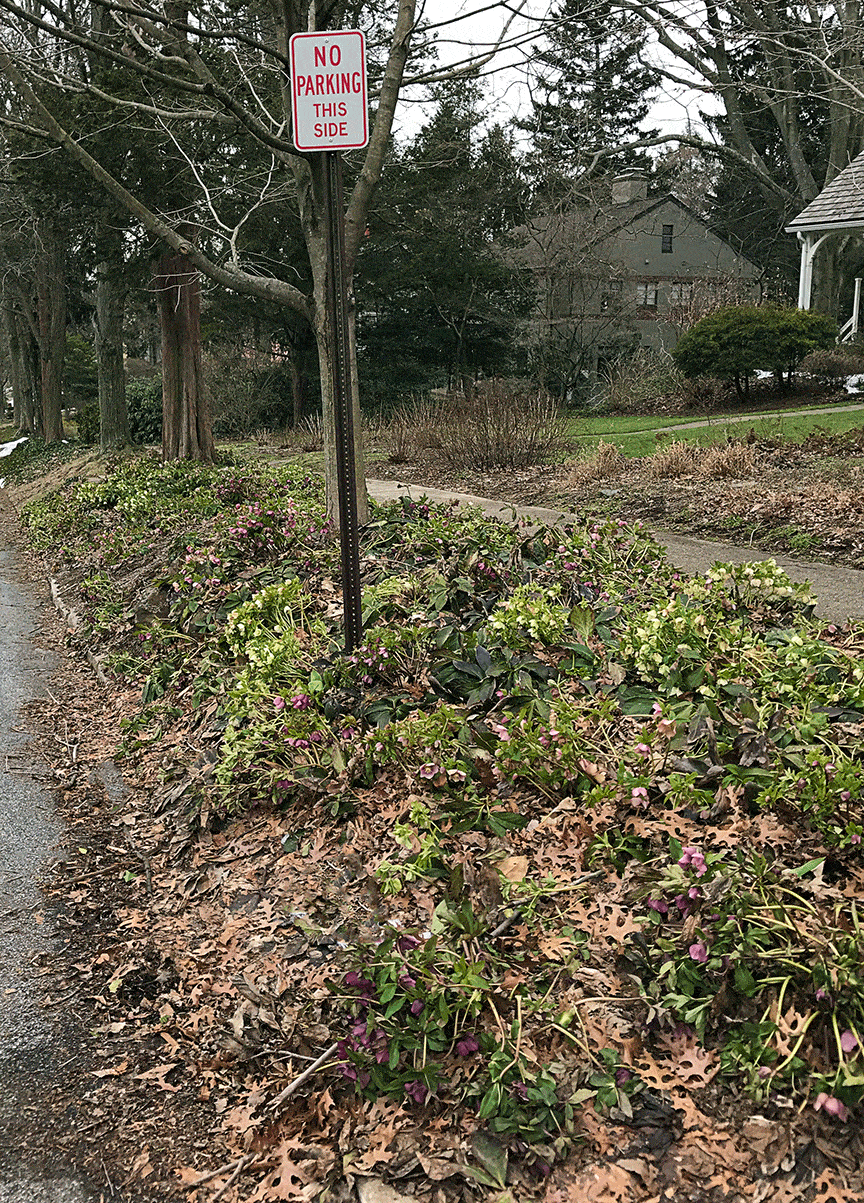People who live in neighborhoods with sidewalks are so lucky. It’s easy to walk past area yards and gardens, and appreciate plantings that might otherwise be ignored by driving past at 30 miles an hour. So I enjoy visiting in places where sidewalks provide safe places to walk and view the houses and landscaping. It’s always easy to tell when you are passing by a yard where the residents obviously love plants.
When walking in my son’s neighborhood in Pennsylvania I commented on one such property. “Someone who lives here loves plants,” I said, the first time I saw it. There were plantings of shrubs that most homeowners might overlook: native oakleaf hydrangeas (Hydrangea quercifolia) and summersweet (Clethra alnifolia) for example, and under-shrub plantings of Epimedium. But it was the Lenten roses, (Helleborus orientalis) which are not really roses but perennials commonly called hellebores, that caught my attention in March. I’m now going to call this property “Hellebore House.”

This is just one of the beds of Helleborus orientalis on the property I call “Hellebore House.”

Plant people commonly call the area between the street and the rest of the property a “hell strip.” These areas are frequently dry, often hot, and in northern areas get dumped with snow plowed from the road. So plants that are put into a “hell strip” have to be drought-tolerant and tough! Clearly, the Lenten rose is such a plant.

And Helleborus orientalis flowers are beautiful as well. These plants often cross and self seed, so you’ll get a variety of lovely colors and new plants. Is it any wonder that homeowners have fallen in love with hellebores?
0 Comments